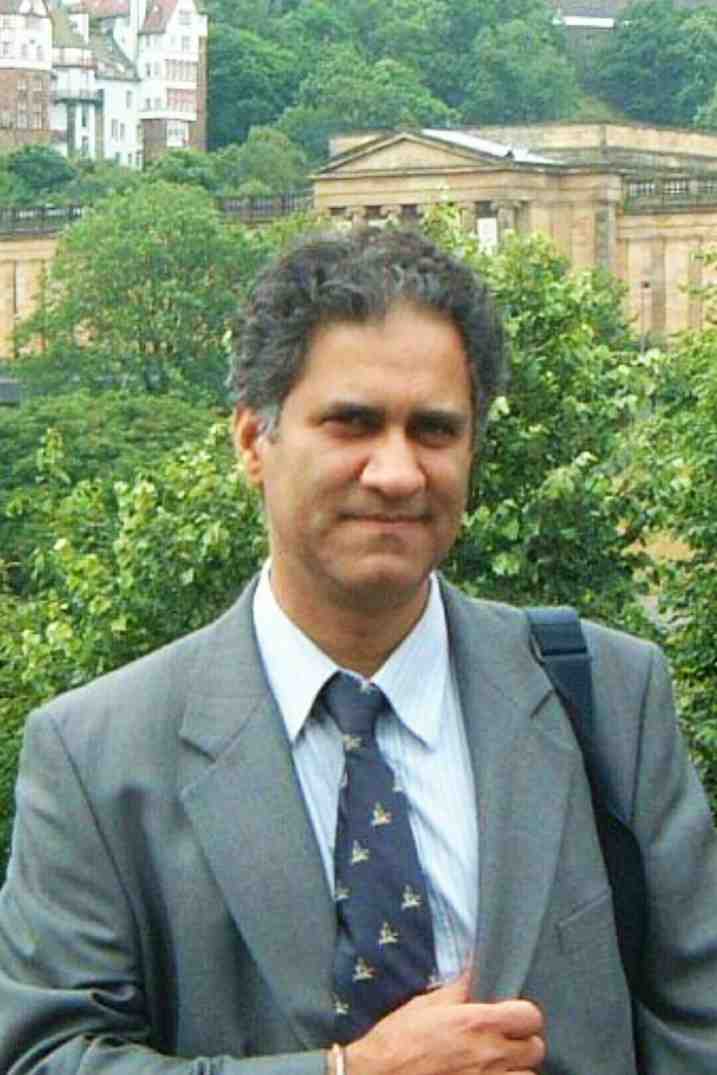AUCTORES
Globalize your Research
Review Article | DOI: https://doi.org/10.31579/2688-7517/063
*Corresponding Author: Theofilidis Antonis, Clinical Neuropsychologist. Githiou 1, Thessaloniki, Greece.
Citation: Theofilidis Antonis, (2025), The Assessment of Developmental Disorder of Motor Coordination in Children, J. Addiction Research and Adolescent Behaviour, 8(1) DOI:10.31579/2688-7517/063
Copyright: © 2025, Theofilidis Antonis. This is an open-access article distributed under the terms of The Creative Commons Attribution License, which permits unrestricted use, distribution, and reproduction in any medium, provided the original author and source are credited.
Received: 03 March 2025 | Accepted: 12 March 2025 | Published: 21 March 2025
Keywords: developmental disorder; assessment; motor coordination
Developmental coordination disorder is a lack of coordination between mental intentions and the body’s ability to carry out those intentions. For example, you may think, “I need to run.” However, the brain does not normally send the appropriate instructions to the arms and legs. The arms and legs do not follow the brain’s instructions. The same thing happens when you try to jump, write, push a button, or perform many other tasks that most people take for granted. People with developmental coordination disorder generally have normal intelligence. However, developmental coordination disorder is sometimes called “clumsy child syndrome,” and it can give the false impression that people with the condition are of reduced intelligence because they cannot perform basic tasks. The condition may be considered a childhood disorder, but its effects continue into adulthood. The main purpose of this paper was to present the basic assessment procedure for developmental motor coordination disorders in children. The process of assessment motor difficulties is presented after mentioning the etiology, the complexity of the disorder and the tests for its detection. Finally, the movement test Movement Assessment Battery for Children is presented.
The etiology and comorbidity of developmental motor coordination disorder.
The etiology of developmental coordination disorder is not entirely clear, because as a disorder, it is characterized by many symptoms and usually there is comorbidity with other disorders (Visser, 2003). Some cite neurological, physiological, cultural, environmental, and genetic factors (VanWaelvelde & Miyahara, 2016), such as incomplete motor patterns and stimuli (Missiuna, Gaines, Soucie, & McLean, 2006) as possible causes. The disorder occurs across many cultures, races, and socioeconomic conditions. By definition, “activities of daily living” involve cultural and intercultural differences. Examining the context in which each child lives and whether they have appropriate opportunities to learn and practice such activities is important to take into serious consideration (APA, 2013). Environmental factors, according to Barnett and Hill (2019), can include perinatal causes, such as short gestation (<37>
In fact, comorbidity in developmental coordination disorder is considered the “rule” rather than the “exception” (Lingam et all., 2012) and it is essential for researchers and practitioners to recognize this fact (Barnett & Hill, 2019). Regarding genetic factors, impairments in the underlying neurodevelopmental processes, and in particular in visual-motor skills (visual-motor perception and spatial intelligence), have been found to affect the ability to make rapid motor adaptations as the complexity of movements increases. Dysfunction in the cerebellum has been proposed, but the neurological basis of developmental coordination disorder remains unclear, due to its coexistence with other disorders, while shared genetic influences have also been proposed (APA, 2013). Few studies have focused on the genetic etiology of the disorder, with Fliers, Vermeulen, Rijsdijk, Altink, Buschgens, Rommelse, and Franke (2009) and Martin, Piek, and Hay (2006) examining the possible common etiology of developmental motor coordination disorder and its comorbidity with attention deficit hyperactivity disorder. Both questioned the potential common genetic etiology of these two disorders.
Genes shared by parents and children influence motor or cognitive skills. A more complex relationship is likely to exist regarding genes and environmental influences (Friend, Defries, & Olson, 2008). It has been argued that developmental motor coordination disorder may be due to information processing difficulties, such as slow kinesthetic (Li et all., 2015) and visual-motor processing (Caçola et all., 2017). Kandel, Schwartz, and Jessel (2020) report that movement first begins with the formation of a mental image, which is produced in the area of the brain responsible for movement. A large body of literature has linked the possible cause of the disorder to a deficit in the planning of motor actions and, confirming this hypothesis, several studies have documented that there are deficits in motor imagery (Adams et all., 2017). Motor imagery involves simulating a skill in the imagination (mental level), without actually performing the movement (Decety & Grèzes, 2006) and is believed to represent the individual's ability to accurately perform the skills, using internal models of motor control. These internal models provide stability to the motor system, by predicting the outcome of movements before the feedback from the sensory-motor system, or in other words, predicting the time it takes to react to the movement and complete it (Gomez & Sirigu 2015). Without the proper development of this ability, movements are clumsy and disorganized, which explains most of the problems that appear in developmental motor coordination disorder (Caçola & Lage, 2019). Therefore, the cause of the motor coordination deficit may lie at the cognitive level, in the processing of information and in the inability of cognitive processing to solve the motor problem (VanWaelvelde et al., 2016), but here too the situation is not completely clear (Henderson, 1994).
Some researchers have hypothesized that the cerebellum is a possible source of motor dysfunction, as abnormal cerebellar activity has been found in some activities in children with developmental motor coordination disorder (Zwicker, Missiuna, Harris & Boyd, 2011). After all, the role of the cerebellum in motor control, motor learning and movement coordination is known (Koziol et all., 2014). Findings from various studies on the cerebellum and developmental motor coordination disorder show that these children are less precise in their movements and more variable in their motor performance, compared to children in the control groups of these studies (Debrabant et all., 2013). Similar to patients with cerebellar degeneration children with developmental motor coordination disorder tend to repeat the same movements over and over again, but this does not improve their performance (Marchiori, Wall, & Bedingfield, 1987). In this case, however, it is not clear whether children fail to correct their movement either because they are unaware of their poor performance or because they simply do not have the ability to correct their mistakes. There is research that implicates the parietal lobe in the etiology of the disorder. Neuroimaging studies seem to have shown that parietal lobe dysfunction may be the source of motor deficits in children with developmental motor coordination disorder (Debrabant et al., 2013). Research has shown that these children showed hypoactivation of the posterior parietal cortex compared to children in the control group during the performance of a continuous monitoring of a skill.
In the review study by Brown-Lum and Zwicker (2015), it was shown that children with developmental motor coordination disorder show increased activation in some brain areas (e.g., fronto-central areas), or under-activation in some other areas (e.g., dorsolateral prefrontal cortex) when performing certain skills. Zwicker and her colleagues (2011), using functional magnetic resonance imaging (fMRI), argued that children with developmental motor coordination disorder use different areas of their brain and activate them differently than typically developing children to support their motor performance when performing a skill. Clinical and experimental studies have shown that difficulties in learning motor skills in children with developmental motor coordination disorder may be related to dysfunction of the basal ganglia, which are involved in the initiation and learning of movement (Calabresi, et all., 2014), the hippocampus (Gheysen et al., 2011), and the midbrain (Sigmundsson, 2003). Brain regions involved in a variety of neurological processes (temporal pole, middle and superior frontal gyrus), including movement planning and execution, attention, memory, and other elements of the movement execution function, appear to be located differently in individuals with motor difficulties (Rey nolds, et all., 2017). However, because the motor system is extremely complex, the above is not yet a foregone conclusion. However, the field of etiology of developmental coordination disorder presents many gaps, without clarifying the exact etiology of the disorder. Perhaps, the causes of developmental coordination disorder are a combination of psychological, physiological, environmental, cultural, genetic and hereditary factors (Geuze, et all., 2001). The development of genetics and neuroimaging research in recent years seems to take us one step closer to understanding the complex mechanisms involved in developmental coordination disorder and neurodevelopmental disorders in general. The next step, after understanding, is to find and implement interventions that may improve the way the brain functions when a neurodevelopmental disorder is present (Barnett & Hill, 2019).
The detection of developmental motor coordination disorder.
The fact that developmental motor coordination disorder has no clear etiology, as well as the multitude of symptoms that govern it, make it difficult to detect. The factors that make it difficult for specialists to easily detect the disorder are the heterogeneity it presents, in terms of the severity of the difficulties (Visser, 2003). Also, its diagnosis is achieved only if there are no other neurological disorders, such as cerebral palsy (Pearsall-Jones, 2010), multiple sclerosis, or Parkinson's disease, etc. (APA, 2013). According to DSM-5 criteria, the diagnosis of developmental motor coordination disorder is made by a clinical synthesis of history (developmental and medical examination), physical examination, school or workplace reports, and individual assessment using psychometric and motor tests. The manifestation of motor difficulties in performing skills that require motor coordination varies with age. Young children may be delayed in achieving motor milestones (sitting, crawling, walking), although many of them achieve typical motor milestones. They may also be delayed in developing skills such as climbing stairs, riding a bicycle, buttoning buttons, completing a puzzle, or using zippers. Even when the skill is achieved, the execution of the movement may seem strange, slow, or less precise than that of peers.
Older children and adults may exhibit slowness or inaccuracy in skills such as assembling puzzles, playing ball games - especially team games -, writing, typing, or driving (APA, 2013). A diagnosis of developmental motor coordination disorder is made only if the motor deficit significantly interferes with performance or participation in daily activities (family, social, school, or community life). Examples of such activities include dressing, eating with age-appropriate utensils without making a mess or mess, participating in motor games with others, using special tools such as a ruler and scissors, and participating in group exercise activities at school. All of these skills are not only deficient, but also slow in execution. Writing ability is affected by the disorder, which in turn affects academic performance. In adults, everyday skills in education and work, especially those that require speed and accuracy, are affected by problems with motor coordination (APA, 2013). The onset of symptoms of developmental motor coordination disorder is in the early developmental period. However, the diagnosis of this disorder is usually not made before the age of 5 years because there is significant variation in age and development in the acquisition of many motor skills, or lack of measurement stability in early childhood, or because other causes of delayed motor development may not have fully manifested themselves (APA, 2013).
The diagnosis of developmental motor coordination disorder is not due to another neurological condition. Thus, examination of visual and neurological function should be included in the diagnostic evaluation. If intellectual disability is present, motor difficulties exceed those expected for mental age. However, no cut-off criterion, or IQ deviation, has been established (APA, 2013). Two other important factors that make it difficult to detect developmental coordination disorder are differences in the age and gender of children (Chow & Henderson, 2003). As the child grows older, the motor demands change, as well as the nature of the existing disorder, making it difficult to identify children with motor difficulties (Henderson, 1994). The nature of the motor skills can give false impressions regarding developmental coordination disorder. Skills such as throwing or catching a ball, jumping, or running are “learned skills,” according to Smyth (1997), so if a child performs poorly in one of these skills, it is due to a lack of experience and not to a motor problem. In their research, Geuze and colleagues (2001) discuss the positive or negative impact of the choice of exercises on detection. Specifically, they report that the difficulty or ease of the exercises, their complexity, the quality of the demonstration, and the emotions they create (fear or anxiety) can negatively affect the detection of developmental motor coordination disorder. Another important parameter, with regard to detection, is the appropriate measurement and evaluation tool/instrument, which, as provided by valid measurement instruments, generally in research, in order to be effective, must measure what it has been designed to measure, be easy to use, have norms for comparing results and of course be appropriate for the population to which it is applied (Cancer, Minoliti, Crepaldi, Antonietti, 2020). All of the above demonstrates the importance of early detection and assessment, in order to promptly address the developmental motor coordination disorder, thus reducing the motor, social, psychological and academic impacts on the child's life, while according to DSM-5 (APA, 2013) it now appears that the difficulties of the disorder continue to exist, both in adolescence and in adulthood.
Motor tests for detecting developmental motor coordination disorder.
As mentioned previously, the detection and assessment of individuals with developmental motor coordination disorder is not an easy task. However, its importance is enormous as it allows for early intervention and treatment. The main method of detecting and assessing children with motor difficulties is motor tests. Previously, the recording of any difficulties was done by observing the characteristics of movement, without the existence of specific detection and assessment criteria (Baker, 1981). Over the years, various tests began to be used to detect developmental motor coordination disorder. The first motor detection tests used were the Test of Motor Proficiency (TMP), the Bruininks-Oseretsky Test of Motor Proficiency (BOTMP), the Test of Gross Motor Development (TGMD), the McCarron Assessment of Neuromuscular Development, and the Test of Motor Impairment (TOMI), (Stott, Moyes, & Henderson, 1985).
The Test of Motor Impairment (Stott et al., 1985) was the basis for the creation of the most modern assessment tool, the Movement Assessment Battery for Children, which was developed a few years later into its new version, the Movement Assessment Battery for Children – 2 (MABC-2), (Henderson, Sugden, & Barnett, 2007). The abundance of motor tests that exist also requires their correct use, so that the information collected from them can be utilized in the design and implementation of appropriate therapeutic and educational programs. Their suitability should also be checked from country to country since they can give different results (Chow et al., 2003). Motor tests have at times received severe criticism regarding their usefulness and effectiveness, but despite their possible disadvantages, the fact is that they are valuable tools in the hands of specialists who know how to use the information they obtain from them. Many of them are used in combination with other alternative assessment methods, or in combination with medical examinations, etc., in order to identify difficulties.
The Movement Assessment Battery for Children-2 (MABC-2) motor test.
The Movement Assessment Battery for Children-2 (MABC-2) is a test whose aim is to identify, describe and guide the goals of the intervention to treat motor deficiency in children aged between 3-16 years, while it is based on norms that cover these ages (Caçola & Lage, 2019). It is one of the most reliable and valid motor tests that have been constructed (Chow & Henderson, 2003), as well as one of the most widely used, to date, instruments for detecting motor difficulties that is widely used in modern literature (Cavalcante, et all., 2019). The MABC-2 (Henderson, et all., 2007) is a diagnostic assessment tool, specifically designed for the detection and assessment of children with developmental motor coordination disorder. It consists of a motor test, with the execution of exercises related to fine motor skills, ball handling skills and balance ability. It is applied individually, while there is a questionnaire, the Movement ABC Checklist (Henderson & Sugden 1992) that is completed by teachers, parents, or specialist therapists. According to Henderson and Sugden (1992), the main characteristics of the motor test are that: a) it identifies and describes problems in children's motor function, b) it is easy to move and simple to use, c) it provides an objective quantitative assessment, d) the time required ranges from 20΄- 30΄ individually and e) it can be used by professionals in the educational and medical fields. As it is one of the most frequently and widely used measurement instruments in the field of research on motor difficulties and developmental motor coordination disorder, its validity and reliability have been examined for its suitability in terms of detecting and assessing this disorder.
Research on the reliability and validity of the MABC-2 has shown that this measurement instrument has a high degree of reliability, both in terms of stability in repeated measurements (Van Wael Velde et al., 2016), and reliability between different raters (Smits, et all., 2008). Therefore, it is a useful tool for identifying children and adolescents with motor difficulties, so that by collecting information, appropriate interventions can be designed to address these difficulties.
Clearly Auctoresonline and particularly Psychology and Mental Health Care Journal is dedicated to improving health care services for individuals and populations. The editorial boards' ability to efficiently recognize and share the global importance of health literacy with a variety of stakeholders. Auctoresonline publishing platform can be used to facilitate of optimal client-based services and should be added to health care professionals' repertoire of evidence-based health care resources.

Journal of Clinical Cardiology and Cardiovascular Intervention The submission and review process was adequate. However I think that the publication total value should have been enlightened in early fases. Thank you for all.

Journal of Women Health Care and Issues By the present mail, I want to say thank to you and tour colleagues for facilitating my published article. Specially thank you for the peer review process, support from the editorial office. I appreciate positively the quality of your journal.
Journal of Clinical Research and Reports I would be very delighted to submit my testimonial regarding the reviewer board and the editorial office. The reviewer board were accurate and helpful regarding any modifications for my manuscript. And the editorial office were very helpful and supportive in contacting and monitoring with any update and offering help. It was my pleasure to contribute with your promising Journal and I am looking forward for more collaboration.

We would like to thank the Journal of Thoracic Disease and Cardiothoracic Surgery because of the services they provided us for our articles. The peer-review process was done in a very excellent time manner, and the opinions of the reviewers helped us to improve our manuscript further. The editorial office had an outstanding correspondence with us and guided us in many ways. During a hard time of the pandemic that is affecting every one of us tremendously, the editorial office helped us make everything easier for publishing scientific work. Hope for a more scientific relationship with your Journal.

The peer-review process which consisted high quality queries on the paper. I did answer six reviewers’ questions and comments before the paper was accepted. The support from the editorial office is excellent.

Journal of Neuroscience and Neurological Surgery. I had the experience of publishing a research article recently. The whole process was simple from submission to publication. The reviewers made specific and valuable recommendations and corrections that improved the quality of my publication. I strongly recommend this Journal.

Dr. Katarzyna Byczkowska My testimonial covering: "The peer review process is quick and effective. The support from the editorial office is very professional and friendly. Quality of the Clinical Cardiology and Cardiovascular Interventions is scientific and publishes ground-breaking research on cardiology that is useful for other professionals in the field.

Thank you most sincerely, with regard to the support you have given in relation to the reviewing process and the processing of my article entitled "Large Cell Neuroendocrine Carcinoma of The Prostate Gland: A Review and Update" for publication in your esteemed Journal, Journal of Cancer Research and Cellular Therapeutics". The editorial team has been very supportive.

Testimony of Journal of Clinical Otorhinolaryngology: work with your Reviews has been a educational and constructive experience. The editorial office were very helpful and supportive. It was a pleasure to contribute to your Journal.

Dr. Bernard Terkimbi Utoo, I am happy to publish my scientific work in Journal of Women Health Care and Issues (JWHCI). The manuscript submission was seamless and peer review process was top notch. I was amazed that 4 reviewers worked on the manuscript which made it a highly technical, standard and excellent quality paper. I appreciate the format and consideration for the APC as well as the speed of publication. It is my pleasure to continue with this scientific relationship with the esteem JWHCI.

This is an acknowledgment for peer reviewers, editorial board of Journal of Clinical Research and Reports. They show a lot of consideration for us as publishers for our research article “Evaluation of the different factors associated with side effects of COVID-19 vaccination on medical students, Mutah university, Al-Karak, Jordan”, in a very professional and easy way. This journal is one of outstanding medical journal.
Dear Hao Jiang, to Journal of Nutrition and Food Processing We greatly appreciate the efficient, professional and rapid processing of our paper by your team. If there is anything else we should do, please do not hesitate to let us know. On behalf of my co-authors, we would like to express our great appreciation to editor and reviewers.

As an author who has recently published in the journal "Brain and Neurological Disorders". I am delighted to provide a testimonial on the peer review process, editorial office support, and the overall quality of the journal. The peer review process at Brain and Neurological Disorders is rigorous and meticulous, ensuring that only high-quality, evidence-based research is published. The reviewers are experts in their fields, and their comments and suggestions were constructive and helped improve the quality of my manuscript. The review process was timely and efficient, with clear communication from the editorial office at each stage. The support from the editorial office was exceptional throughout the entire process. The editorial staff was responsive, professional, and always willing to help. They provided valuable guidance on formatting, structure, and ethical considerations, making the submission process seamless. Moreover, they kept me informed about the status of my manuscript and provided timely updates, which made the process less stressful. The journal Brain and Neurological Disorders is of the highest quality, with a strong focus on publishing cutting-edge research in the field of neurology. The articles published in this journal are well-researched, rigorously peer-reviewed, and written by experts in the field. The journal maintains high standards, ensuring that readers are provided with the most up-to-date and reliable information on brain and neurological disorders. In conclusion, I had a wonderful experience publishing in Brain and Neurological Disorders. The peer review process was thorough, the editorial office provided exceptional support, and the journal's quality is second to none. I would highly recommend this journal to any researcher working in the field of neurology and brain disorders.

Dear Agrippa Hilda, Journal of Neuroscience and Neurological Surgery, Editorial Coordinator, I trust this message finds you well. I want to extend my appreciation for considering my article for publication in your esteemed journal. I am pleased to provide a testimonial regarding the peer review process and the support received from your editorial office. The peer review process for my paper was carried out in a highly professional and thorough manner. The feedback and comments provided by the authors were constructive and very useful in improving the quality of the manuscript. This rigorous assessment process undoubtedly contributes to the high standards maintained by your journal.

International Journal of Clinical Case Reports and Reviews. I strongly recommend to consider submitting your work to this high-quality journal. The support and availability of the Editorial staff is outstanding and the review process was both efficient and rigorous.

Thank you very much for publishing my Research Article titled “Comparing Treatment Outcome Of Allergic Rhinitis Patients After Using Fluticasone Nasal Spray And Nasal Douching" in the Journal of Clinical Otorhinolaryngology. As Medical Professionals we are immensely benefited from study of various informative Articles and Papers published in this high quality Journal. I look forward to enriching my knowledge by regular study of the Journal and contribute my future work in the field of ENT through the Journal for use by the medical fraternity. The support from the Editorial office was excellent and very prompt. I also welcome the comments received from the readers of my Research Article.

Dear Erica Kelsey, Editorial Coordinator of Cancer Research and Cellular Therapeutics Our team is very satisfied with the processing of our paper by your journal. That was fast, efficient, rigorous, but without unnecessary complications. We appreciated the very short time between the submission of the paper and its publication on line on your site.

I am very glad to say that the peer review process is very successful and fast and support from the Editorial Office. Therefore, I would like to continue our scientific relationship for a long time. And I especially thank you for your kindly attention towards my article. Have a good day!

"We recently published an article entitled “Influence of beta-Cyclodextrins upon the Degradation of Carbofuran Derivatives under Alkaline Conditions" in the Journal of “Pesticides and Biofertilizers” to show that the cyclodextrins protect the carbamates increasing their half-life time in the presence of basic conditions This will be very helpful to understand carbofuran behaviour in the analytical, agro-environmental and food areas. We greatly appreciated the interaction with the editor and the editorial team; we were particularly well accompanied during the course of the revision process, since all various steps towards publication were short and without delay".

I would like to express my gratitude towards you process of article review and submission. I found this to be very fair and expedient. Your follow up has been excellent. I have many publications in national and international journal and your process has been one of the best so far. Keep up the great work.

We are grateful for this opportunity to provide a glowing recommendation to the Journal of Psychiatry and Psychotherapy. We found that the editorial team were very supportive, helpful, kept us abreast of timelines and over all very professional in nature. The peer review process was rigorous, efficient and constructive that really enhanced our article submission. The experience with this journal remains one of our best ever and we look forward to providing future submissions in the near future.

I am very pleased to serve as EBM of the journal, I hope many years of my experience in stem cells can help the journal from one way or another. As we know, stem cells hold great potential for regenerative medicine, which are mostly used to promote the repair response of diseased, dysfunctional or injured tissue using stem cells or their derivatives. I think Stem Cell Research and Therapeutics International is a great platform to publish and share the understanding towards the biology and translational or clinical application of stem cells.

I would like to give my testimony in the support I have got by the peer review process and to support the editorial office where they were of asset to support young author like me to be encouraged to publish their work in your respected journal and globalize and share knowledge across the globe. I really give my great gratitude to your journal and the peer review including the editorial office.

I am delighted to publish our manuscript entitled "A Perspective on Cocaine Induced Stroke - Its Mechanisms and Management" in the Journal of Neuroscience and Neurological Surgery. The peer review process, support from the editorial office, and quality of the journal are excellent. The manuscripts published are of high quality and of excellent scientific value. I recommend this journal very much to colleagues.

Dr.Tania Muñoz, My experience as researcher and author of a review article in The Journal Clinical Cardiology and Interventions has been very enriching and stimulating. The editorial team is excellent, performs its work with absolute responsibility and delivery. They are proactive, dynamic and receptive to all proposals. Supporting at all times the vast universe of authors who choose them as an option for publication. The team of review specialists, members of the editorial board, are brilliant professionals, with remarkable performance in medical research and scientific methodology. Together they form a frontline team that consolidates the JCCI as a magnificent option for the publication and review of high-level medical articles and broad collective interest. I am honored to be able to share my review article and open to receive all your comments.

“The peer review process of JPMHC is quick and effective. Authors are benefited by good and professional reviewers with huge experience in the field of psychology and mental health. The support from the editorial office is very professional. People to contact to are friendly and happy to help and assist any query authors might have. Quality of the Journal is scientific and publishes ground-breaking research on mental health that is useful for other professionals in the field”.

Dear editorial department: On behalf of our team, I hereby certify the reliability and superiority of the International Journal of Clinical Case Reports and Reviews in the peer review process, editorial support, and journal quality. Firstly, the peer review process of the International Journal of Clinical Case Reports and Reviews is rigorous, fair, transparent, fast, and of high quality. The editorial department invites experts from relevant fields as anonymous reviewers to review all submitted manuscripts. These experts have rich academic backgrounds and experience, and can accurately evaluate the academic quality, originality, and suitability of manuscripts. The editorial department is committed to ensuring the rigor of the peer review process, while also making every effort to ensure a fast review cycle to meet the needs of authors and the academic community. Secondly, the editorial team of the International Journal of Clinical Case Reports and Reviews is composed of a group of senior scholars and professionals with rich experience and professional knowledge in related fields. The editorial department is committed to assisting authors in improving their manuscripts, ensuring their academic accuracy, clarity, and completeness. Editors actively collaborate with authors, providing useful suggestions and feedback to promote the improvement and development of the manuscript. We believe that the support of the editorial department is one of the key factors in ensuring the quality of the journal. Finally, the International Journal of Clinical Case Reports and Reviews is renowned for its high- quality articles and strict academic standards. The editorial department is committed to publishing innovative and academically valuable research results to promote the development and progress of related fields. The International Journal of Clinical Case Reports and Reviews is reasonably priced and ensures excellent service and quality ratio, allowing authors to obtain high-level academic publishing opportunities in an affordable manner. I hereby solemnly declare that the International Journal of Clinical Case Reports and Reviews has a high level of credibility and superiority in terms of peer review process, editorial support, reasonable fees, and journal quality. Sincerely, Rui Tao.

Clinical Cardiology and Cardiovascular Interventions I testity the covering of the peer review process, support from the editorial office, and quality of the journal.

Clinical Cardiology and Cardiovascular Interventions, we deeply appreciate the interest shown in our work and its publication. It has been a true pleasure to collaborate with you. The peer review process, as well as the support provided by the editorial office, have been exceptional, and the quality of the journal is very high, which was a determining factor in our decision to publish with you.
The peer reviewers process is quick and effective, the supports from editorial office is excellent, the quality of journal is high. I would like to collabroate with Internatioanl journal of Clinical Case Reports and Reviews journal clinically in the future time.

Clinical Cardiology and Cardiovascular Interventions, I would like to express my sincerest gratitude for the trust placed in our team for the publication in your journal. It has been a true pleasure to collaborate with you on this project. I am pleased to inform you that both the peer review process and the attention from the editorial coordination have been excellent. Your team has worked with dedication and professionalism to ensure that your publication meets the highest standards of quality. We are confident that this collaboration will result in mutual success, and we are eager to see the fruits of this shared effort.

Dear Dr. Jessica Magne, Editorial Coordinator 0f Clinical Cardiology and Cardiovascular Interventions, I hope this message finds you well. I want to express my utmost gratitude for your excellent work and for the dedication and speed in the publication process of my article titled "Navigating Innovation: Qualitative Insights on Using Technology for Health Education in Acute Coronary Syndrome Patients." I am very satisfied with the peer review process, the support from the editorial office, and the quality of the journal. I hope we can maintain our scientific relationship in the long term.
Dear Monica Gissare, - Editorial Coordinator of Nutrition and Food Processing. ¨My testimony with you is truly professional, with a positive response regarding the follow-up of the article and its review, you took into account my qualities and the importance of the topic¨.

Dear Dr. Jessica Magne, Editorial Coordinator 0f Clinical Cardiology and Cardiovascular Interventions, The review process for the article “The Handling of Anti-aggregants and Anticoagulants in the Oncologic Heart Patient Submitted to Surgery” was extremely rigorous and detailed. From the initial submission to the final acceptance, the editorial team at the “Journal of Clinical Cardiology and Cardiovascular Interventions” demonstrated a high level of professionalism and dedication. The reviewers provided constructive and detailed feedback, which was essential for improving the quality of our work. Communication was always clear and efficient, ensuring that all our questions were promptly addressed. The quality of the “Journal of Clinical Cardiology and Cardiovascular Interventions” is undeniable. It is a peer-reviewed, open-access publication dedicated exclusively to disseminating high-quality research in the field of clinical cardiology and cardiovascular interventions. The journal's impact factor is currently under evaluation, and it is indexed in reputable databases, which further reinforces its credibility and relevance in the scientific field. I highly recommend this journal to researchers looking for a reputable platform to publish their studies.

Dear Editorial Coordinator of the Journal of Nutrition and Food Processing! "I would like to thank the Journal of Nutrition and Food Processing for including and publishing my article. The peer review process was very quick, movement and precise. The Editorial Board has done an extremely conscientious job with much help, valuable comments and advices. I find the journal very valuable from a professional point of view, thank you very much for allowing me to be part of it and I would like to participate in the future!”

Dealing with The Journal of Neurology and Neurological Surgery was very smooth and comprehensive. The office staff took time to address my needs and the response from editors and the office was prompt and fair. I certainly hope to publish with this journal again.Their professionalism is apparent and more than satisfactory. Susan Weiner

My Testimonial Covering as fellowing: Lin-Show Chin. The peer reviewers process is quick and effective, the supports from editorial office is excellent, the quality of journal is high. I would like to collabroate with Internatioanl journal of Clinical Case Reports and Reviews.

My experience publishing in Psychology and Mental Health Care was exceptional. The peer review process was rigorous and constructive, with reviewers providing valuable insights that helped enhance the quality of our work. The editorial team was highly supportive and responsive, making the submission process smooth and efficient. The journal's commitment to high standards and academic rigor makes it a respected platform for quality research. I am grateful for the opportunity to publish in such a reputable journal.
My experience publishing in International Journal of Clinical Case Reports and Reviews was exceptional. I Come forth to Provide a Testimonial Covering the Peer Review Process and the editorial office for the Professional and Impartial Evaluation of the Manuscript.

I would like to offer my testimony in the support. I have received through the peer review process and support the editorial office where they are to support young authors like me, encourage them to publish their work in your esteemed journals, and globalize and share knowledge globally. I really appreciate your journal, peer review, and editorial office.
Dear Agrippa Hilda- Editorial Coordinator of Journal of Neuroscience and Neurological Surgery, "The peer review process was very quick and of high quality, which can also be seen in the articles in the journal. The collaboration with the editorial office was very good."

I would like to express my sincere gratitude for the support and efficiency provided by the editorial office throughout the publication process of my article, “Delayed Vulvar Metastases from Rectal Carcinoma: A Case Report.” I greatly appreciate the assistance and guidance I received from your team, which made the entire process smooth and efficient. The peer review process was thorough and constructive, contributing to the overall quality of the final article. I am very grateful for the high level of professionalism and commitment shown by the editorial staff, and I look forward to maintaining a long-term collaboration with the International Journal of Clinical Case Reports and Reviews.
To Dear Erin Aust, I would like to express my heartfelt appreciation for the opportunity to have my work published in this esteemed journal. The entire publication process was smooth and well-organized, and I am extremely satisfied with the final result. The Editorial Team demonstrated the utmost professionalism, providing prompt and insightful feedback throughout the review process. Their clear communication and constructive suggestions were invaluable in enhancing my manuscript, and their meticulous attention to detail and dedication to quality are truly commendable. Additionally, the support from the Editorial Office was exceptional. From the initial submission to the final publication, I was guided through every step of the process with great care and professionalism. The team's responsiveness and assistance made the entire experience both easy and stress-free. I am also deeply impressed by the quality and reputation of the journal. It is an honor to have my research featured in such a respected publication, and I am confident that it will make a meaningful contribution to the field.

"I am grateful for the opportunity of contributing to [International Journal of Clinical Case Reports and Reviews] and for the rigorous review process that enhances the quality of research published in your esteemed journal. I sincerely appreciate the time and effort of your team who have dedicatedly helped me in improvising changes and modifying my manuscript. The insightful comments and constructive feedback provided have been invaluable in refining and strengthening my work".

I thank the ‘Journal of Clinical Research and Reports’ for accepting this article for publication. This is a rigorously peer reviewed journal which is on all major global scientific data bases. I note the review process was prompt, thorough and professionally critical. It gave us an insight into a number of important scientific/statistical issues. The review prompted us to review the relevant literature again and look at the limitations of the study. The peer reviewers were open, clear in the instructions and the editorial team was very prompt in their communication. This journal certainly publishes quality research articles. I would recommend the journal for any future publications.

Dear Jessica Magne, with gratitude for the joint work. Fast process of receiving and processing the submitted scientific materials in “Clinical Cardiology and Cardiovascular Interventions”. High level of competence of the editors with clear and correct recommendations and ideas for enriching the article.

We found the peer review process quick and positive in its input. The support from the editorial officer has been very agile, always with the intention of improving the article and taking into account our subsequent corrections.

My article, titled 'No Way Out of the Smartphone Epidemic Without Considering the Insights of Brain Research,' has been republished in the International Journal of Clinical Case Reports and Reviews. The review process was seamless and professional, with the editors being both friendly and supportive. I am deeply grateful for their efforts.
To Dear Erin Aust – Editorial Coordinator of Journal of General Medicine and Clinical Practice! I declare that I am absolutely satisfied with your work carried out with great competence in following the manuscript during the various stages from its receipt, during the revision process to the final acceptance for publication. Thank Prof. Elvira Farina

Dear Jessica, and the super professional team of the ‘Clinical Cardiology and Cardiovascular Interventions’ I am sincerely grateful to the coordinated work of the journal team for the no problem with the submission of my manuscript: “Cardiometabolic Disorders in A Pregnant Woman with Severe Preeclampsia on the Background of Morbid Obesity (Case Report).” The review process by 5 experts was fast, and the comments were professional, which made it more specific and academic, and the process of publication and presentation of the article was excellent. I recommend that my colleagues publish articles in this journal, and I am interested in further scientific cooperation. Sincerely and best wishes, Dr. Oleg Golyanovskiy.

Dear Ashley Rosa, Editorial Coordinator of the journal - Psychology and Mental Health Care. " The process of obtaining publication of my article in the Psychology and Mental Health Journal was positive in all areas. The peer review process resulted in a number of valuable comments, the editorial process was collaborative and timely, and the quality of this journal has been quickly noticed, resulting in alternative journals contacting me to publish with them." Warm regards, Susan Anne Smith, PhD. Australian Breastfeeding Association.

Dear Jessica Magne, Editorial Coordinator, Clinical Cardiology and Cardiovascular Interventions, Auctores Publishing LLC. I appreciate the journal (JCCI) editorial office support, the entire team leads were always ready to help, not only on technical front but also on thorough process. Also, I should thank dear reviewers’ attention to detail and creative approach to teach me and bring new insights by their comments. Surely, more discussions and introduction of other hemodynamic devices would provide better prevention and management of shock states. Your efforts and dedication in presenting educational materials in this journal are commendable. Best wishes from, Farahnaz Fallahian.
Dear Maria Emerson, Editorial Coordinator, International Journal of Clinical Case Reports and Reviews, Auctores Publishing LLC. I am delighted to have published our manuscript, "Acute Colonic Pseudo-Obstruction (ACPO): A rare but serious complication following caesarean section." I want to thank the editorial team, especially Maria Emerson, for their prompt review of the manuscript, quick responses to queries, and overall support. Yours sincerely Dr. Victor Olagundoye.

Dear Ashley Rosa, Editorial Coordinator, International Journal of Clinical Case Reports and Reviews. Many thanks for publishing this manuscript after I lost confidence the editors were most helpful, more than other journals Best wishes from, Susan Anne Smith, PhD. Australian Breastfeeding Association.

Dear Agrippa Hilda, Editorial Coordinator, Journal of Neuroscience and Neurological Surgery. The entire process including article submission, review, revision, and publication was extremely easy. The journal editor was prompt and helpful, and the reviewers contributed to the quality of the paper. Thank you so much! Eric Nussbaum, MD
Dr Hala Al Shaikh This is to acknowledge that the peer review process for the article ’ A Novel Gnrh1 Gene Mutation in Four Omani Male Siblings, Presentation and Management ’ sent to the International Journal of Clinical Case Reports and Reviews was quick and smooth. The editorial office was prompt with easy communication.

Dear Erin Aust, Editorial Coordinator, Journal of General Medicine and Clinical Practice. We are pleased to share our experience with the “Journal of General Medicine and Clinical Practice”, following the successful publication of our article. The peer review process was thorough and constructive, helping to improve the clarity and quality of the manuscript. We are especially thankful to Ms. Erin Aust, the Editorial Coordinator, for her prompt communication and continuous support throughout the process. Her professionalism ensured a smooth and efficient publication experience. The journal upholds high editorial standards, and we highly recommend it to fellow researchers seeking a credible platform for their work. Best wishes By, Dr. Rakhi Mishra.

Dear Jessica Magne, Editorial Coordinator, Clinical Cardiology and Cardiovascular Interventions, Auctores Publishing LLC. The peer review process of the journal of Clinical Cardiology and Cardiovascular Interventions was excellent and fast, as was the support of the editorial office and the quality of the journal. Kind regards Walter F. Riesen Prof. Dr. Dr. h.c. Walter F. Riesen.

Dear Ashley Rosa, Editorial Coordinator, International Journal of Clinical Case Reports and Reviews, Auctores Publishing LLC. Thank you for publishing our article, Exploring Clozapine's Efficacy in Managing Aggression: A Multiple Single-Case Study in Forensic Psychiatry in the international journal of clinical case reports and reviews. We found the peer review process very professional and efficient. The comments were constructive, and the whole process was efficient. On behalf of the co-authors, I would like to thank you for publishing this article. With regards, Dr. Jelle R. Lettinga.

Dear Clarissa Eric, Editorial Coordinator, Journal of Clinical Case Reports and Studies, I would like to express my deep admiration for the exceptional professionalism demonstrated by your journal. I am thoroughly impressed by the speed of the editorial process, the substantive and insightful reviews, and the meticulous preparation of the manuscript for publication. Additionally, I greatly appreciate the courteous and immediate responses from your editorial office to all my inquiries. Best Regards, Dariusz Ziora

Dear Chrystine Mejia, Editorial Coordinator, Journal of Neurodegeneration and Neurorehabilitation, Auctores Publishing LLC, We would like to thank the editorial team for the smooth and high-quality communication leading up to the publication of our article in the Journal of Neurodegeneration and Neurorehabilitation. The reviewers have extensive knowledge in the field, and their relevant questions helped to add value to our publication. Kind regards, Dr. Ravi Shrivastava.

Dear Clarissa Eric, Editorial Coordinator, Journal of Clinical Case Reports and Studies, Auctores Publishing LLC, USA Office: +1-(302)-520-2644. I would like to express my sincere appreciation for the efficient and professional handling of my case report by the ‘Journal of Clinical Case Reports and Studies’. The peer review process was not only fast but also highly constructive—the reviewers’ comments were clear, relevant, and greatly helped me improve the quality and clarity of my manuscript. I also received excellent support from the editorial office throughout the process. Communication was smooth and timely, and I felt well guided at every stage, from submission to publication. The overall quality and rigor of the journal are truly commendable. I am pleased to have published my work with Journal of Clinical Case Reports and Studies, and I look forward to future opportunities for collaboration. Sincerely, Aline Tollet, UCLouvain.

Dear Ms. Mayra Duenas, Editorial Coordinator, International Journal of Clinical Case Reports and Reviews. “The International Journal of Clinical Case Reports and Reviews represented the “ideal house” to share with the research community a first experience with the use of the Simeox device for speech rehabilitation. High scientific reputation and attractive website communication were first determinants for the selection of this Journal, and the following submission process exceeded expectations: fast but highly professional peer review, great support by the editorial office, elegant graphic layout. Exactly what a dynamic research team - also composed by allied professionals - needs!" From, Chiara Beccaluva, PT - Italy.

Dear Maria Emerson, Editorial Coordinator, we have deeply appreciated the professionalism demonstrated by the International Journal of Clinical Case Reports and Reviews. The reviewers have extensive knowledge of our field and have been very efficient and fast in supporting the process. I am really looking forward to further collaboration. Thanks. Best regards, Dr. Claudio Ligresti
Dear Chrystine Mejia, Editorial Coordinator, Journal of Neurodegeneration and Neurorehabilitation. “The peer review process was efficient and constructive, and the editorial office provided excellent communication and support throughout. The journal ensures scientific rigor and high editorial standards, while also offering a smooth and timely publication process. We sincerely appreciate the work of the editorial team in facilitating the dissemination of innovative approaches such as the Bonori Method.” Best regards, Dr. Matteo Bonori.
